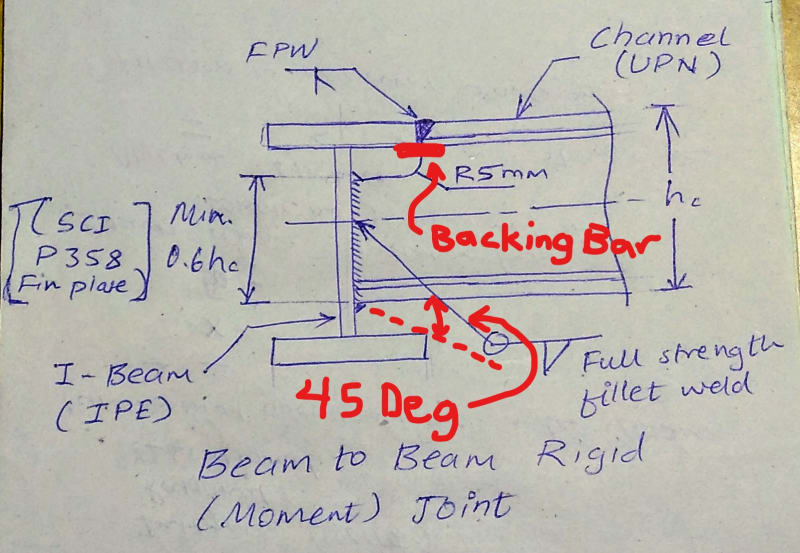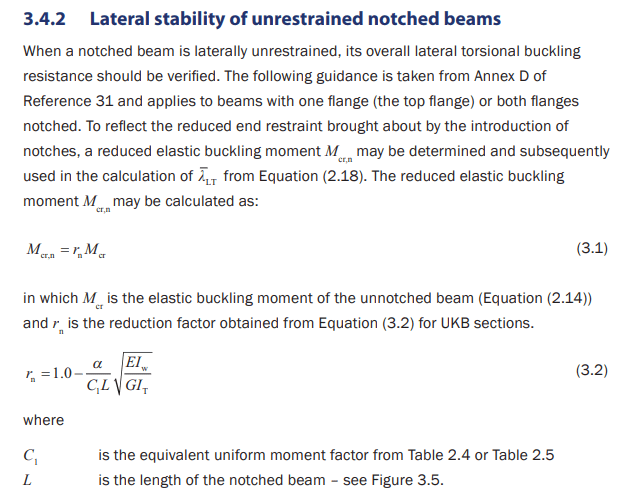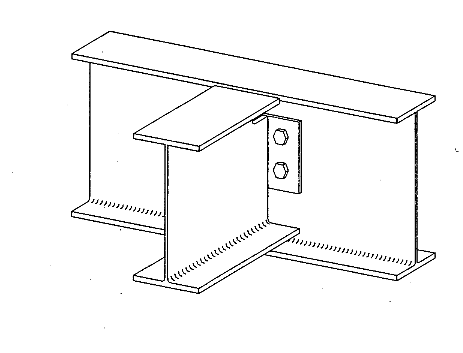GD_P, depending on the rotation that occurs at the end of the supported beam, the welded detail and supported beam will pretty much be simply supported. The beam you are connecting to is torsionally flexible, so will rotate to a state to maintain equilibrium. The torsion being transmitted to the supporting beam is equal to the negative moment at the end of the supported beam.
A torsion will develop in the supporting beam (how small/large depends on relative stiffnesses, loads and resulting deformations/twists), so if welding it is the only option then its a matter of designing the supporting beam for the moment/shear/torsion present using the relevant combined actions checks in your local codes. If the torsion is small then with some judgement it might be able to be ignored (see below).
Consider alternatively for a minute this scenario, with a bolted web/fin plate or clip angles, there is also an eccentricity from the supporting beams web to the line of bolts through the supported beams web. This creates a similar torsion to that noted in your welded scenario in the supporting beam, the end of the beam delivers the nominally simply supported shear (V*) at some eccentricity (e) to the web creating a torsion (=V* x e) (that is typically ignored in design I'd say without giving it a second thought). The twist in this system of the supporting beam is probably higher than your welded scenario for the same load as the vertical row of bolts uses up the tolerance in the bolt holes to go into bolt bearing on the web plate to transfer the shear and moment at the location of the row of bolts.
Your scenario by comparison essentially delivers the shear to the face of the web (A much smaller eccentricity), and the twist of the supporting beam is constrained to the rotation at the end of the supported beam. I would hazard a guess that the torsion is therefore lower than the equivalent nominally pinned bolted detail. As noted the torsion in the bolted detail is often neglected in design checks. As an exercise, if you took your shear and said it was a bolted connection at 50mm eccentricity, is the resulting moment at the center of the supporting beam from this eccentricity of the shear less than the moment seen at the ends of your model with all fixed connections.
If it is less than I'd be fairly happy ignoring it because its done inadvertently all the time by designers, then it just comes down to making sure the connection is detailed appropriately in the terms others have raised regarding weld access and the like. If the torsion delivered to the supporting beam is higher in your fixed model than the equivalent pinned bolted detail, then exercise some judgement as to whether you need to specifically check the supporting beam for combined actions including the effects of torsion.



